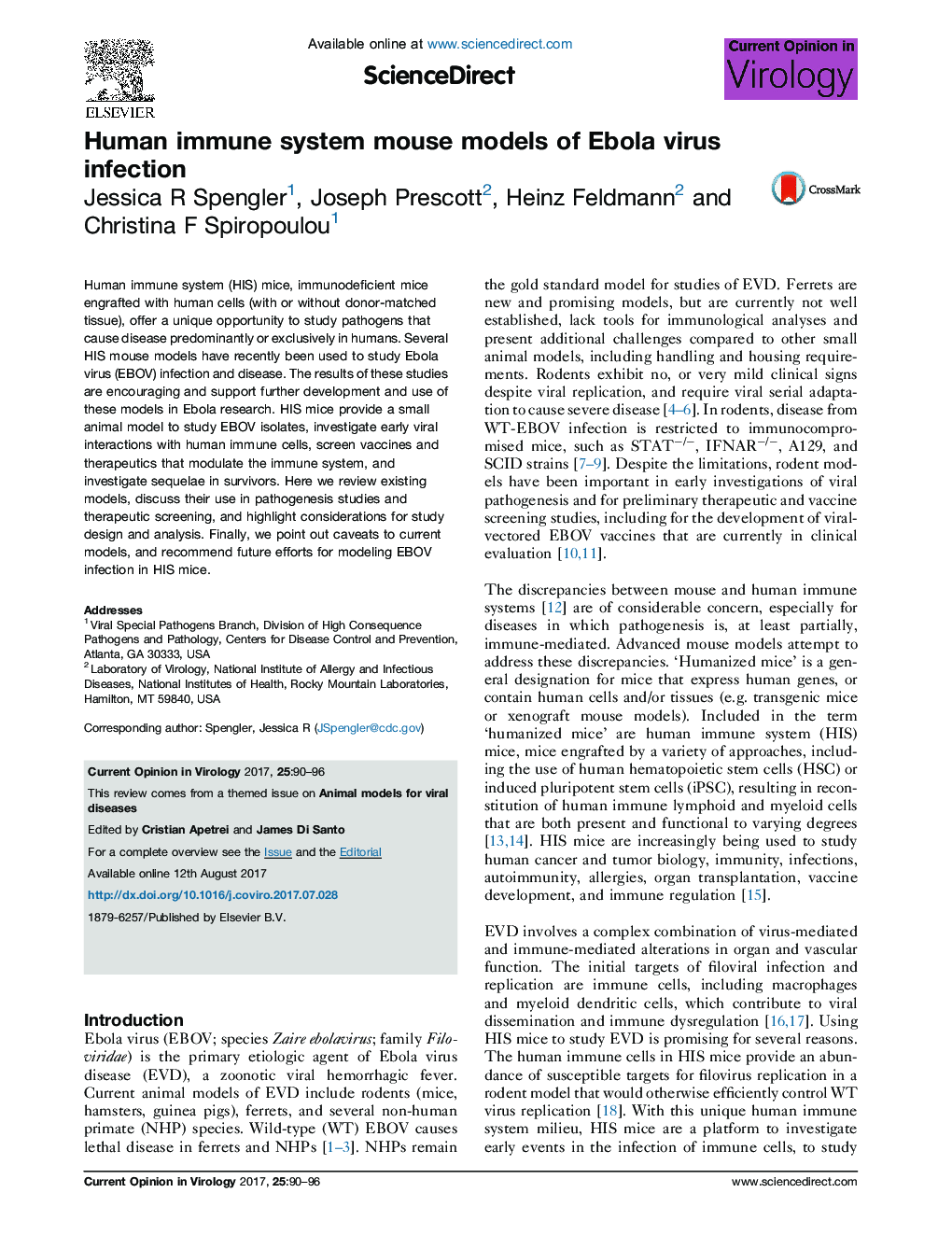| Article ID | Journal | Published Year | Pages | File Type |
|---|---|---|---|---|
| 5546186 | Current Opinion in Virology | 2017 | 7 Pages |
â¢Human immune system mice are useful tools for Ebola virus research.â¢Human lymphoid and myeloid immune cells are reconstituted in human immune system mice.â¢Wild-type Ebola virus causes disease in humanized mice.â¢Disease outcome varies with model, dose, route, donor, and time post-engraftment.â¢Knowledge of human immune cell levels and function in each model is key in interpreting studies.
Human immune system (HIS) mice, immunodeficient mice engrafted with human cells (with or without donor-matched tissue), offer a unique opportunity to study pathogens that cause disease predominantly or exclusively in humans. Several HIS mouse models have recently been used to study Ebola virus (EBOV) infection and disease. The results of these studies are encouraging and support further development and use of these models in Ebola research. HIS mice provide a small animal model to study EBOV isolates, investigate early viral interactions with human immune cells, screen vaccines and therapeutics that modulate the immune system, and investigate sequelae in survivors. Here we review existing models, discuss their use in pathogenesis studies and therapeutic screening, and highlight considerations for study design and analysis. Finally, we point out caveats to current models, and recommend future efforts for modeling EBOV infection in HIS mice.
